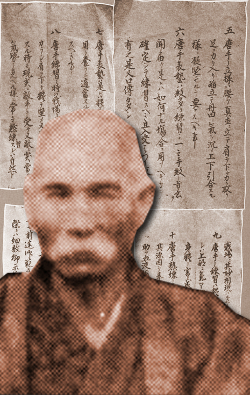
“Itosu Anko said…”
There was a discussion recently in an online forum, which touched the topic of karate as a 1) civilian self-defence system for use against 2) untrained attackers. We hear these two arguments all the time. The disourse circles around a perceived paradox: as it is considered a civilian self-defence, why would it only be designed against untrained attackers? The discourse is stuck in the simple problem that, if 1) is true, 2) must be wrong, and vice versa.
But what if it was neither designed as a civilian self-defence system, nor against untrained attackers?
I’am aware probably 49 out of the 50 million karateka worldwide scream “bats in the belfry!!!” now.
Well, it is not the question if today’s karate works or can be made to work as a civilian self-defence. Rather, the question is whether it was created to serve as a civilian self-defence.
So let’s revisit Itosu’s Ten Maxims. The internet says:
- Karate is not merely practiced for your own benefit; it can be used to protect one’s family or master. It is not intended to be used against a single assailant but instead as a way of avoiding a fight should one be confronted by a villain or ruffian.
Very well. Let’s re-examine it. I will spare you the original text in Japanese, but the following is the translation of it, as good as possible:
- Karate is not merely limited to train physical education, but also strengthens the intent to formally consecrate one’s own body and life at any time, without regret, loyal and courageously for ruler and parents. One should never bear the intention to wage a fight against an adversary. Therefore, should the unlikely event (or emergency) occur that one encounters a thief, burglar, or robber, or an otherwise lawless person, thou shalt as much as possible avoid striking. The quintessence should be, by word of honor, to never injure human beings by means of one’s fists and feet.
Maybe this clarifies the meaning already a little better than the initial internet attempt. However, as it is a literal translation, it does not take into consideration any circumstances, intentions, or anything else of the era and topic: it still leaves too much room for interpretation. Therefore, in order to get a real grip, the text needs to be paraphrased. The following paraphrase resorted to the scholarly assessment of the text by an Okinawan karate master (sorry, I don’t share my sources in this blog post):
- Karate does not only serve the purpose of physical education of individual private persons, in fact not at all. In case that serious affairs should befall lord and parents in the times ahead, it means to take upon oneself the moral duty to consecrate oneself without hesitation and at any time, without even sparing one’s own body and life, with justice and courage, for the progress of society and empire. Therefore, it is by no means intended to fight against one enemy. Because this being the case, in the unlikely event that you are attacked by a thief, burglar, or robber, or an otherwise lawless person, whenever practicable you should act towards bringing to bear your everyday training, skillfully handle the situation well, and put him to flight. Never intend to harm a person by punches or kicks. This is the true spirit of karate and it is what you want to deeply engrave on your heart.
Very different, isn’t it?
As can clearly be seen from the development of this interpretation, karate – in Itosu’s mind – was apparently not created to serve as a “civilian self-defence system.” It was also not created for “use against untrained attackers.”
Not at all.
During the era of the Ryūkyū kingdom, what was to become karate (and kobudō) appears to have been a matter of various royal government duties fulfilled by all levels of society. In other words, it doesn’t seem to have meant a “civilian self-defence” at that time, but rather a means to control society, and in fact along Neo-Confucian thought. Influences from a methodical system of “civilian self-defence” were marginal at best.
Therefore, the question is: When exactly did karate become a “civilian self-defence system?”
1950s onward?
❁
© 2016, Andreas Quast. All rights reserved.
